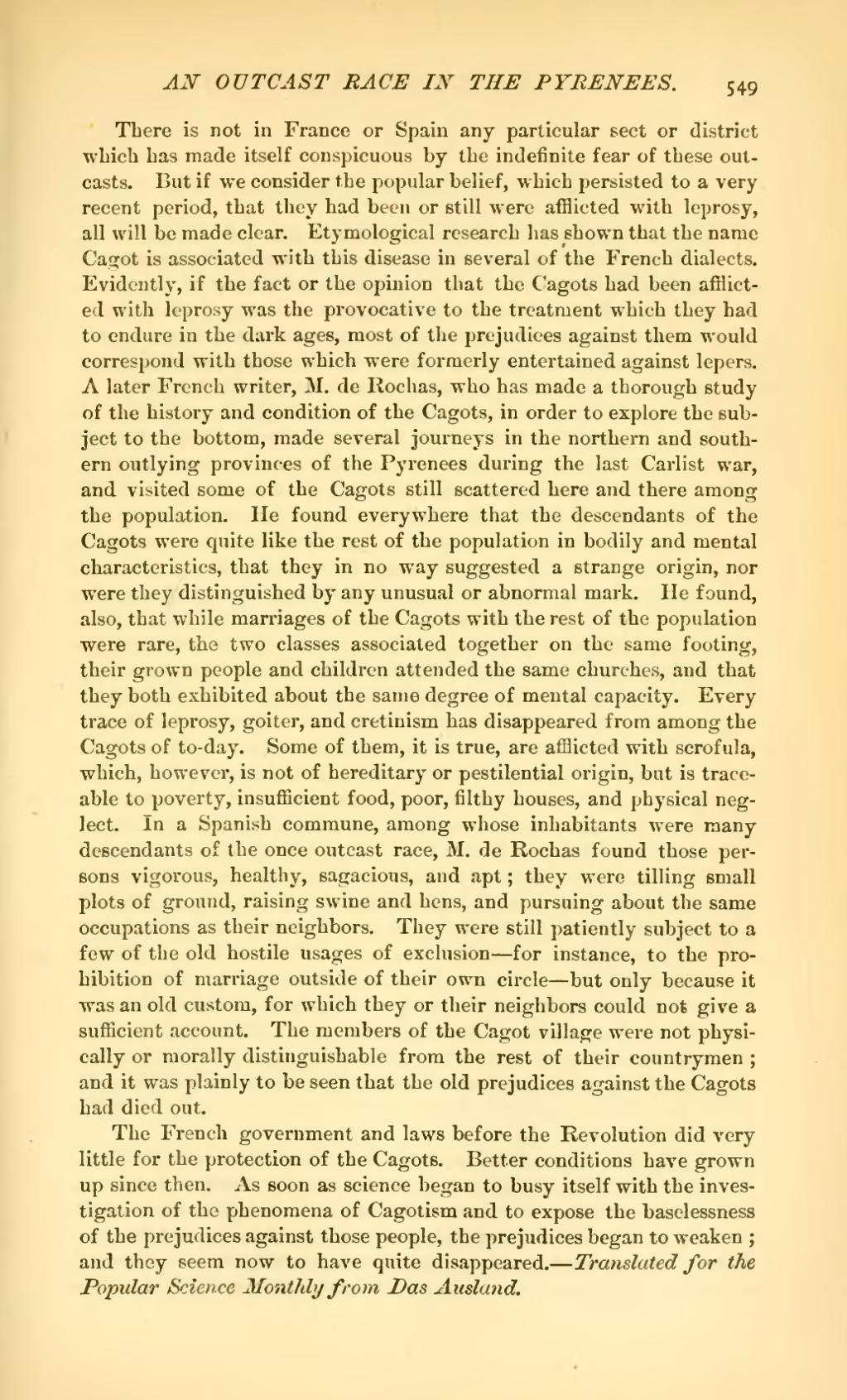There is not in France or Spain any particular sect or district which has made itself conspicuous by the indefinite fear of these outcasts. But if we consider the popular belief, which persisted to a very recent period, that they had been or still were afflicted with leprosy, all will be made clear. Etymological research has shown that the name Cagot is associated with this disease in several of the French dialects. Evidently, if the fact or the opinion that the Cagots had been afflicted with leprosy was the provocative to the treatment which they had to endure in the dark ages, most of the prejudices against them would correspond with those which were formerly entertained against lepers. A later French writer, M, de Rochas, who has made a thorough study of the history and condition of the Cagots, in order to explore the subject to the bottom, made several journeys in the northern and southern outlying provinces of the Pyrenees during the last Carlist war, and visited some of the Cagots still scattered here and there among the population. He found everywhere that the descendants of the Cagots were quite like the rest of the population in bodily and mental characteristics, that they in no way suggested a strange origin, nor were they distinguished by any unusual or abnormal mark, lie found, also, that while marriages of the Cagots with the rest of the population were rare, the two classes associated together on the same footing, their grown people and children attended the same churches, and that they both exhibited about the same degree of mental capacity. Every trace of leprosy, goiter, and cretinism has disappeared from among the Cagots of to-day. Some of them, it is true, are afflicted with scrofula, which, however, is not of hereditary or pestilential origin, but is traceable to poverty, insufficient food, poor, filthy houses, and physical neglect. In a Spanish commune, among whose inhabitants were many descendants of the once outcast race, M. de Rochas found those persons vigorous, healthy, sagacious, and apt; they were tilling small plots of ground, raising swine and hens, and pursuing about the same occupations as their neighbors. They were still patiently subject to a few of the old hostile usages of exclusion—for instance, to the prohibition of marriage outside of their own circle—but only because it was an old custom, for which they or their neighbors could not give a sufficient account. The members of the Cagot village were not physically or morally distinguishable from the rest of their countrymen; and it was plainly to be seen that the old prejudices against the Cagots had died out.
The French government and laws before the Revolution did very little for the protection of the Cagots, Better conditions have grown up since then. As soon as science began to busy itself with the investigation of the phenomena of Cagotism and to expose the baselessness of the prejudices against those people, the prejudices began to weaken; and they seem now to have quite disappeared.—Translated for the Popular Science Monthly from Das Ausland.
